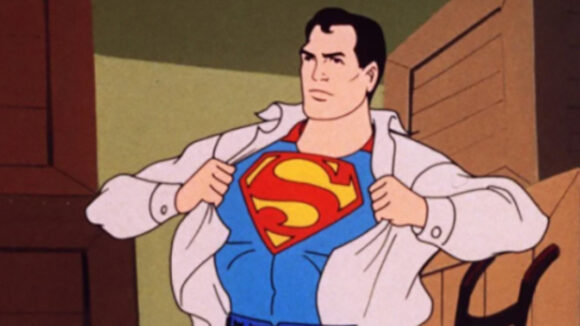

Filmation Got To Produce Its First Major TV Series With This One Weird Trick
Before Saturday morning cartoons were the norm, before superheroes were commonplace on tv, CBS’s The New Adventures of Superman (1966) broke the mold and blazed a path that would define tv trends for decades.
Filmation, the studio that made the show, had only been in existence a few years up to that point and had never produced a series entirely on its own. To win the job, the scrappy start-up with barely a handful of employees had to convince the network that they were an established studio with the capacity to produce an entire series. The task required a bit of artful subterfuge.
When the call came in for Superman, Filmation, co-founded by Lou Scheimer and Hal Sutherland, was set up in a too-big-for-purpose bank building that was almost entirely empty. At the time, the studio was scraping by doing commercial work and had tried their hands at a few original productions. So thin were the margins on which the company was operating that the three bosses would take turns answering the phone so no debtor ever got to speak to the same person twice.
One fateful day, Mort Weisinger, (DC Comics editor of Superman in the 1950s-60s and co-creator of Aquaman, Green Arrow, and others) called the studio, identifying himself as Superman Weisinger, and asked if Filmation would be interested in producing a new Superman series for CBS.
The bosses enthusiastically agreed without seriously considering the conditions. CBS was offering a $36,000 budget per episode, and Scheimer thought, “Of course we can do it for that!” he recalls, while in the same breath admitting he had no idea if that number was sufficient. At the time, they were so desperate for a big project that they’d have done it for $10 an episode, he jests.

The hiccup: the Superman rightsholders wanted to fly out to see the Filmation studio in person to ensure their investment was being safely made.
So, like Superman donning a suit and glasses, Scheimer and his team dressed up their studio and called in friends and family, including their wives and siblings, to fill the building with bodies, putting anyone with a spec of artistic talent in the eye-lines of their visitors. They even managed to rope in George Rowley from Hanna-Barbera for the first half of the day. “We were desperate and that brought on creativity,” said Sutherland.
He added, “We figured if we walked them through fast they wouldn’t have time to really study what they were doing as long as [the fake artists] were flipping the papers.”
Needing to get back to the Hanna-Barbera studios for the second half of the work day, Rowley faked a toothache. He interrupted the meeting between Scheimer and the CBS team, asking for permission to go to the dentist. After kindly obliging while Rowley was in the room, Scheimer turned sour once he was gone and indicated he would doc Rowley’s pay for taking a half day. That feigned shrewdness convinced the men from the network that Filmation was “a little studio, but they run a tight ship.”
Filmation managed to secure not only a deal to do Superman, but eventually got the rights to make shows using several of DC’s characters, and the likes of Batman, Aquaman, and Hawkman could be seen fully animated on Saturday mornings. The studio took off, eventually becoming one of the largest in the U.S. with around 875 employees at its peak.
This story comes from the 2008 documentary Animation Maverick: The Lou Scheimer Story, which lays out the colorful history of Filmation. The film has been posted to Archive.org and can be viewed below:

